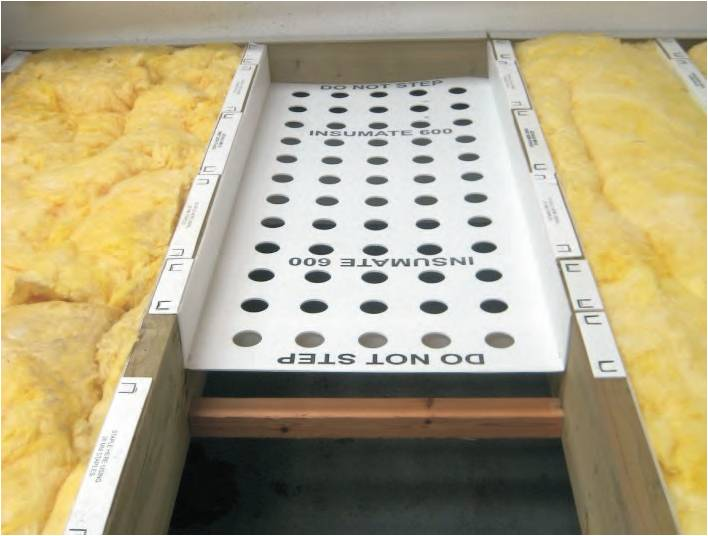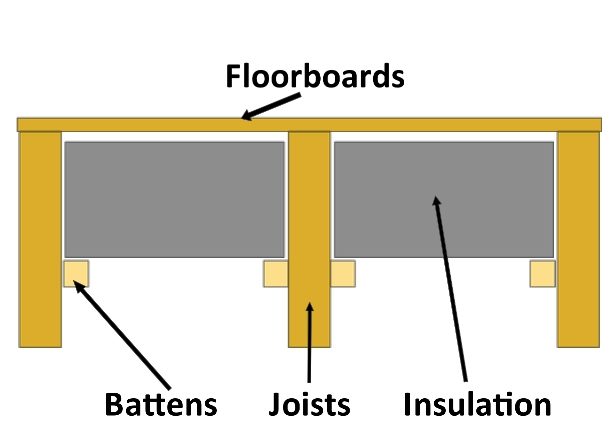If you are living in an old house, built with suspended timber floorboards instead of a concrete foundation, installing underfloor insulation is the best method to stop draughts, allowing your home to preserve more heat.
Many older houses with suspended timber floors have big draughts and inadequate underfloor insulation; this can cause cold feet as well as higher energy bills. Installing insulation can address both these problems and give a payback on your investment in 5 years or less.
Insulation projects are often focused on exterior walls and attics. While insulating these areas are important, homeowners can also save money on their heating (and cooling) costs if they insulate the space under their floors. Floor insulation can come in a variety of forms. For homes without basements and those with unheated cellars, adding insulation can bring heating costs down.
Owners might also consider insulating basements, foundations, or even the space between the basement and first floor. The type of insulation that is right for a given home depends on its design and climate control needs. However, most houses can benefit from added insulation under the floors of the main living space.

With inadequate or no underfloor insulation, your home can be suffering up to 15% additional heat loss.

Installing underfloor insulation is simple in houses with suspended timber floors, a typical construction style in older properties featuring wooden joists with a gap underneath.
You can identify a suspended floor by checking for air bricks or ventilation bricks on the exterior walls below floor level.
This gap provides easy access for adding insulation material, which can significantly improve your home’s energy efficiency. Several types of insulation are suitable for this purpose, including mineral wool batts, rigid foam boards, or natural alternatives like sheep’s wool.
Adding underfloor insulation can help to reduce heat loss, lower energy bills, and improve overall comfort levels within your home.
In homes with suspended timber floors, installing underfloor insulation is relatively straightforward.
Our professional installers carefully lift a few floorboards at strategic points (approximately one per metre) to easily position the insulation material between the joists. This approach minimises disruption and ensures complete coverage.
Any floorboards that are lifted are replaced with high-quality, brand-new boards, maintaining the floor’s aesthetic appeal.
However, it’s crucial to address any existing issues with dampness, rot, or insect damage before proceeding with insulation. These problems can compromise the effectiveness of the insulation and potentially lead to further structural damage.
Our team can assess your floor and recommend the necessary remedial actions before insulation is installed, ensuring a long-lasting and effective solution for your home’s energy efficiency.


Underfloor insulation offers a cosy warmth underfoot and a lighter wallet. Creating a barrier against cold air traps heat in your home during winter, making your heating system work less and reducing energy bills. This translates to year-round comfort, as underfloor insulation can also help regulate cool summer temperatures in some areas. It’s a win-win for both your budget and your toes!
Underfloor insulation creates a thermal barrier, preventing heat loss through the floor and significantly reducing heating costs, especially in the colder months.
Underfloor insulation minimises drafts and cold spots, contributing to a more consistent and comfortable temperature throughout your home.
Improved insulation helps your home retain heat more effectively, decreasing your reliance on heating systems and lowering your carbon footprint.
By minimising the temperature difference between the ground and your floor, underfloor insulation acts as a health guardian, helping to prevent condensation and the growth of mould, which can be harmful to your health and damage your home. This ensures a safe and healthy environment for you and your family.
An Energy Performance Certificate (EPC) rates your home’s energy efficiency, and underfloor insulation can significantly improve this rating, potentially increasing the value of your property.